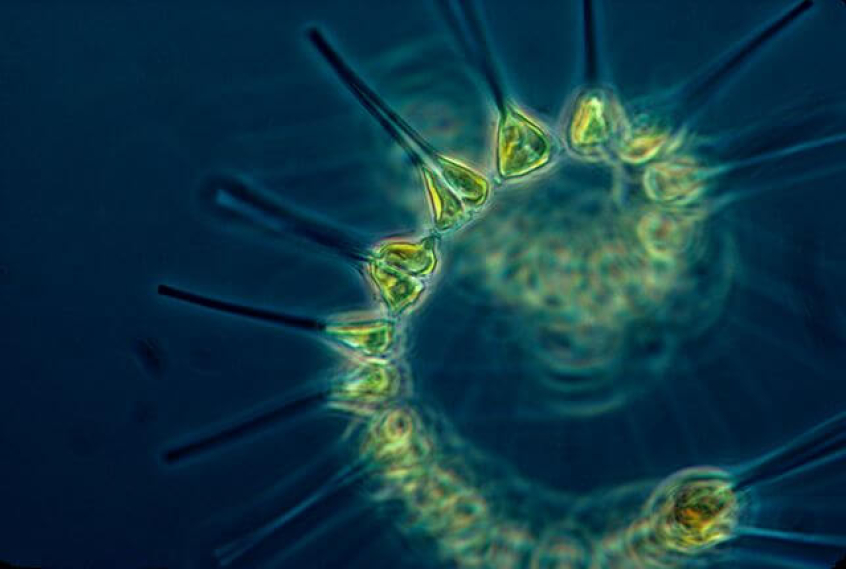
Scientists have discovered a single-cell plankton that evolved a miniature eye similar to that of humans, and they believe it would help the creature see better.
The new study that appeared in the journal Nature should explain how various life forms are able to develop similar characteristics to adapt to the changing environment, in a process science calls convergent evolution.
Scientists gathered samples of the plankton from the coasts of British Columbia and Japan and examined the eye structure using a 3D microscope. The microscopes were then able to reconstruct a 3D image at a subcellular level.
The plankton in the study are predatory microorganisms with a dark purple spot called ocelloid, which seems to appear so much like any multicellular eye of other animals that scientists initially thought it was an animal's eye that the microbe had eaten.
Greg Gravelis, lead scientist from the University of British Columbia in Canada described the eye as an "amazingly complex structure" that evolved in a single-celled microbe.
"It contains a collection of sub-cellular organelles that look very much like the lens, cornea, iris and retina of multicellular eyes found in humans and other larger animals," Phys.org quoted Gravelis as saying.
A definite function for ocelloids still remains uncertain because of the elusive nature of warnowiids. The plankton are hard to find and there were no attempts to grow them in labs. In addition, the sea plankton are usually known to hunt their prey using their transparent structures that look like harpoons.
According to the scientists' theory, the eye could help the plankton detect any changes in light that passes through their prey's bodies, allowing them to find out which way to go when hunting.
Science Daily reports that structures resembling the eye have evolved many times in different forms of life and algae, and they usually possess the ability to detect direction and intensity of light as well as other objects.













